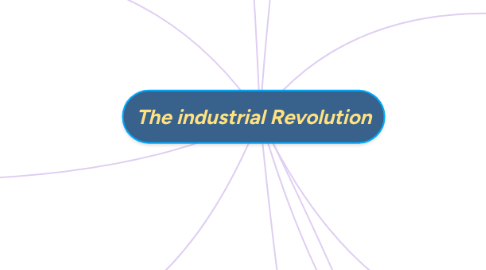The industrial Revolution
Door tijana jovicic


1. 6.Population movement during the Industrial Revolution
1.1. Human and animal labour replaced by steam
1.2. People moved from country villages to towns and cities
1.3. Factory system and new machines made the production of textiles quicker,more efficent
1.4. People were forced to seach work in cities because argicolutural revolution left many peolpe without jobs
2. 7.Changes to the way of life
2.1. Pace of living changed with move to big towns, urbanization meant smaller living quarters for many with the leaving behind of farms and land
2.1.1. Water was dirty,food was expensive and poor quality
3. 9.Positive and Negative impacts of the Industrial Revolution
3.1. .
3.2. .
3.3. .
3.4. .
3.5. .
3.6. .
4. 8.Working conditions
4.1. Britain:
4.1.1. Australia:
5. 6.How industrialization contributed to the development of Britain & Australia
5.1. Technology improved production
5.2. Britain: Railway and canals allowed for the movement of goods and people to be quicker and more efficent
5.3. Australia: Opening of first railways enabled transportation of wool, coal, grain and milk very cheaply. Linked the colonies and fostered development of primary industries - e.g. wheat growing and
6. 1.Why did the Industial Revolution begin in Britain?
6.1. Change to Tansport
6.1.1. Creation of railways and canals allowed materials to be moved quickly and easily.
6.2. Changes to energy,machinery and scale
6.2.1. New inventions and techniques that changed the way coal and steel were formed
6.2.2. Many small workshops employing few people turned into large factories employing hundreds of people
6.3. Success of colonies
6.3.1. Massess of resources draw from empires as a result
6.3.1.1. Colonies provided new markets for manufactured goods
